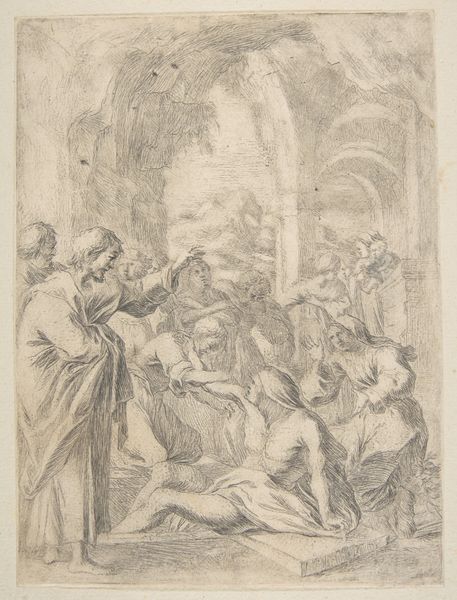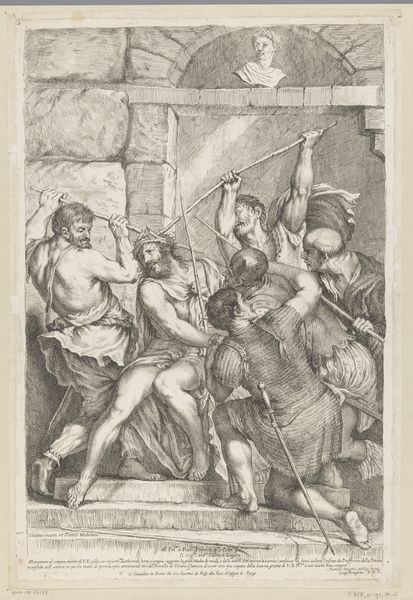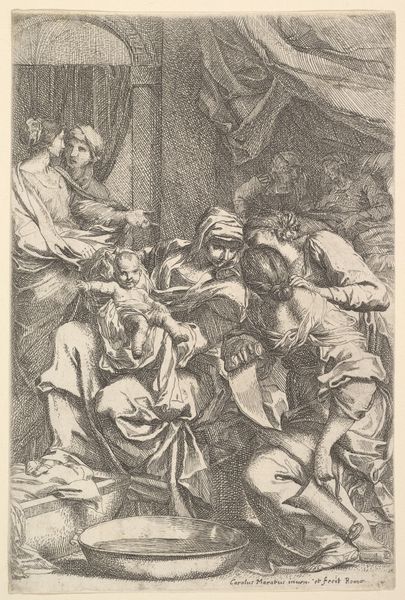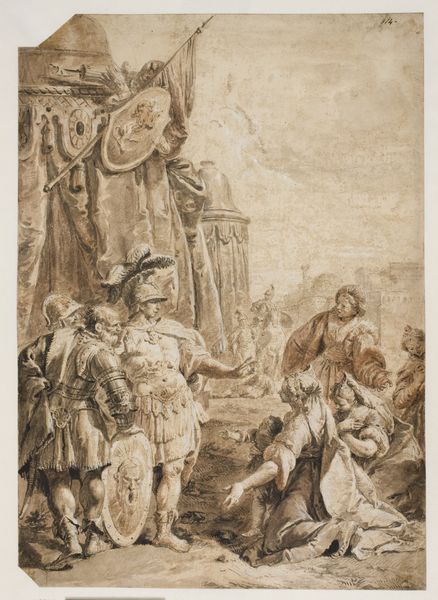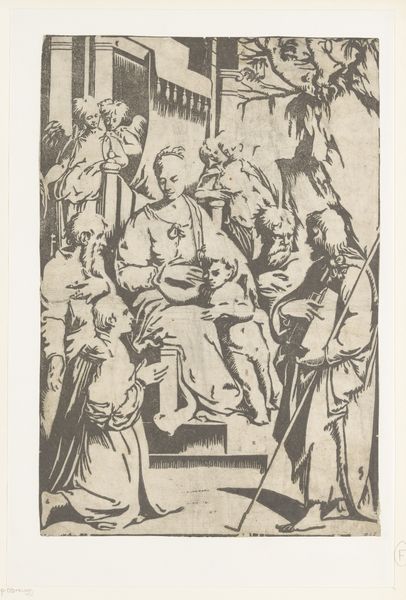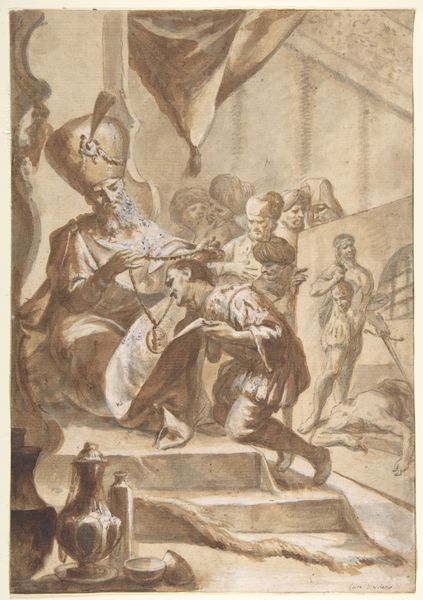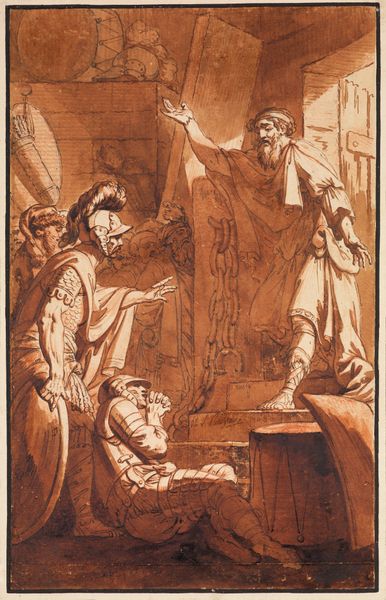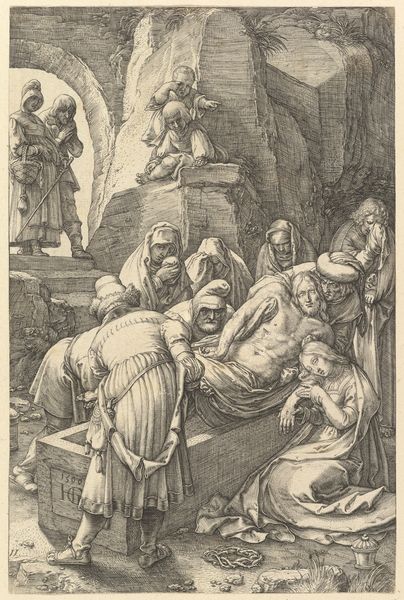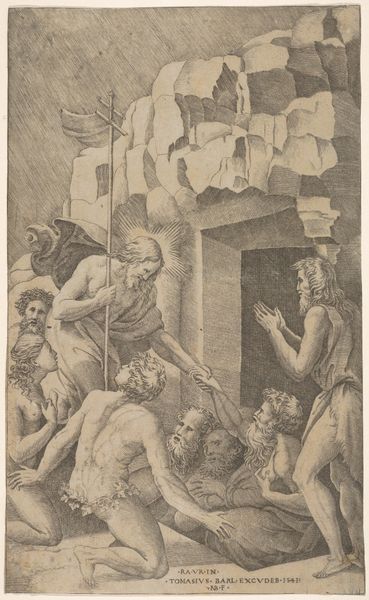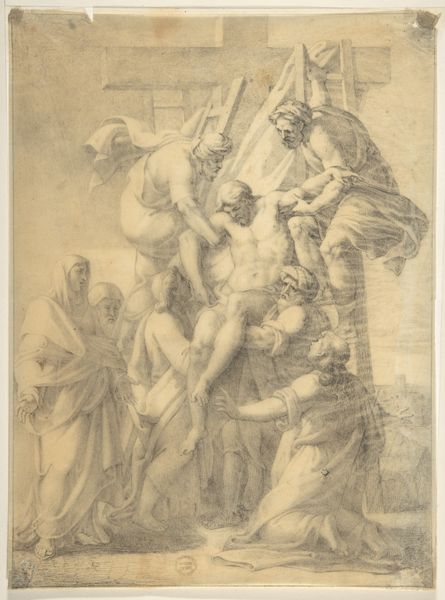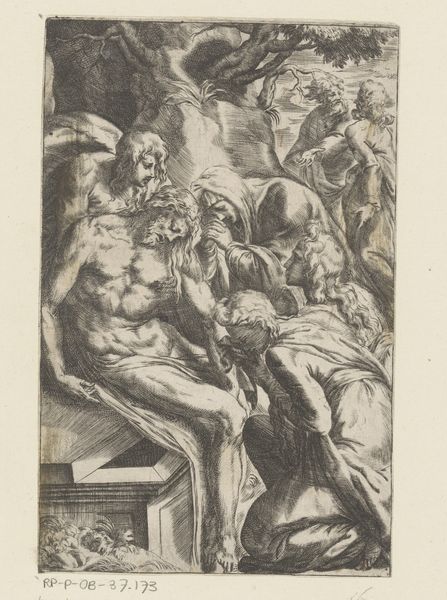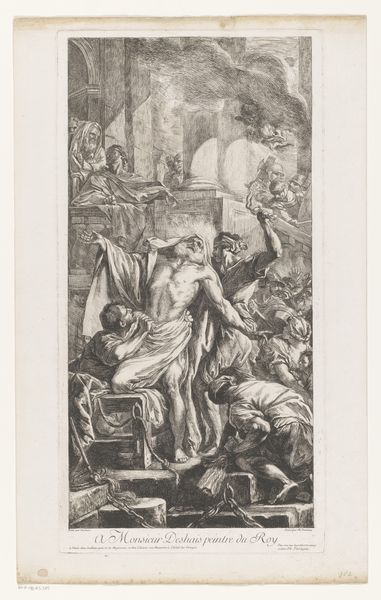
drawing, gouache, paper, ink, charcoal
#
portrait
#
drawing
#
gouache
#
charcoal drawing
#
figuration
#
paper
#
ink
#
charcoal
#
history-painting
#
italian-renaissance
Copyright: Public Domain
Jacopo Ligozzi created this drawing, Ecce Homo, with pen, brush, and gray and white wash on paper. The image depicts a bound and bleeding Christ, wearing a crown of thorns, who is presented to the baying crowd. Ligozzi made this drawing in Italy, sometime in the late 16th or early 17th century. This was a time when the Catholic Church used art to spread its message, especially through visual displays of piety. Ligozzi worked for the Medici court in Florence and his religious works often reflect the conservative sensibilities of his patrons. He also produced naturalistic studies of plants and animals, suggesting an engagement with scientific observation, but here he returns to the familiar visual language of religious suffering. Historians seek to understand the circumstances of an artwork's production, using documents such as letters, contracts, and inventories, in order to reconstruct the social and institutional contexts which shaped the artist's vision. The study of art gives us insight into past societies, not just their aesthetic values, but also their politics and beliefs.
Comments
No comments
Be the first to comment and join the conversation on the ultimate creative platform.
